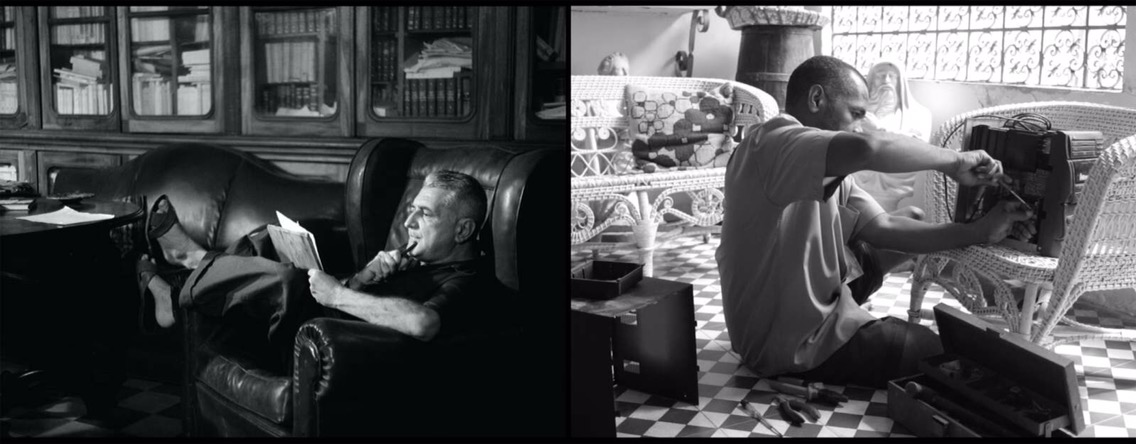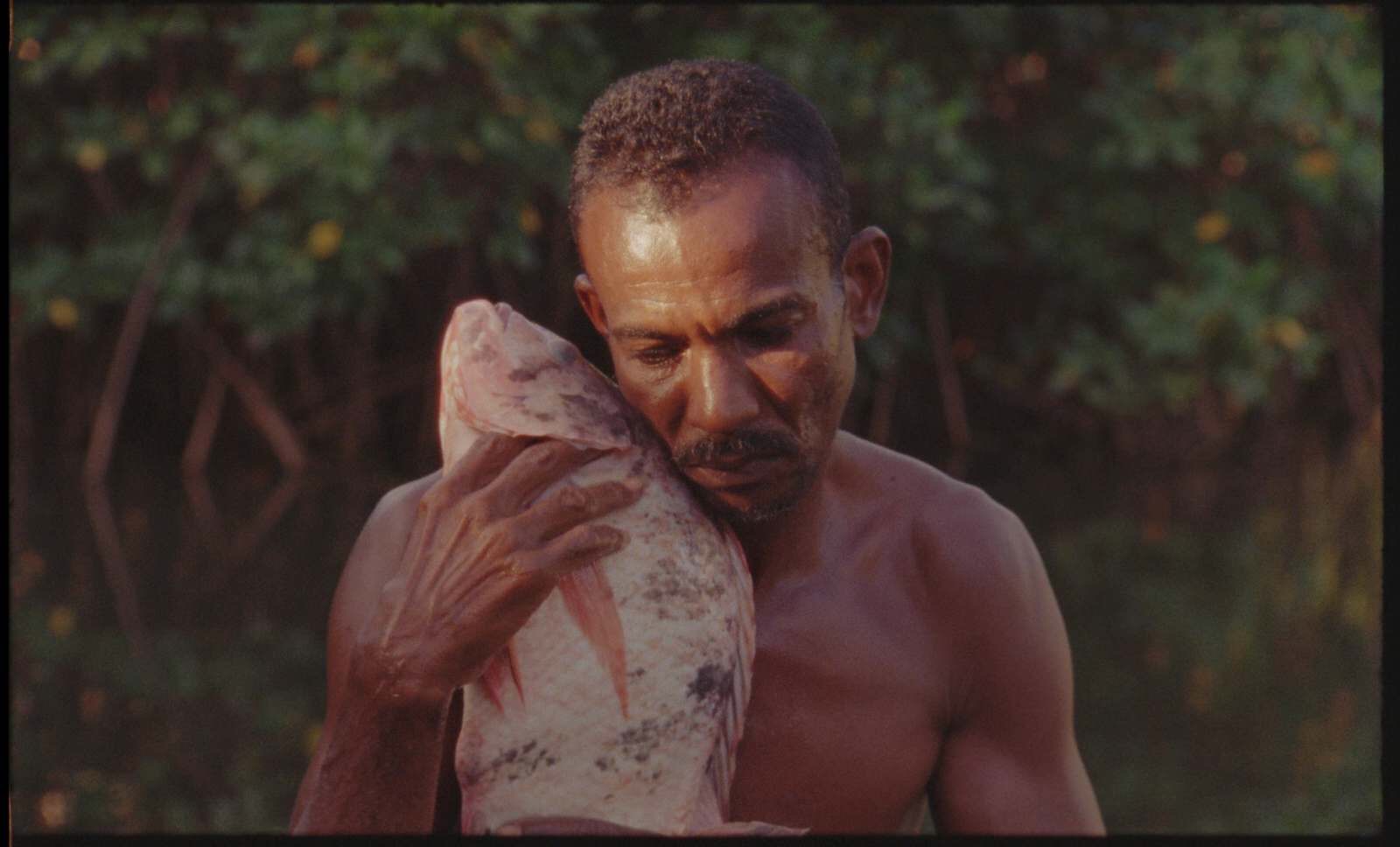While at the Met Breuer, I screened many films and viewed many pieces by Brazilian artist Lygia Pape. The film that caught my attention the most was one titled Divisor (Divider). The piece featured a large group of people wearing one large white sheet with holes in it for their heads while they walked down a large street. The film itself was a recreation of Pape’s performance art piece of the same title that was a statement against the dictatorship in Brazil at the time. What interested me about the film was how the sheet created a large mass out of the individuals that wore it. It forced them to walk and march in a very uniform manner, which was highlighted by the blaring white of the “divider” itself.
The film also featured many close-ups of the people wearing the sheet. The camera would often pick one person out of the group and then follow them as they walked down the street. This allowed the viewer to closely gauge and watch the reactions of those participating in the film. At times, the participants would even pull out a camera to take a picture or film the spectacle around them. This made think of our culture today and our desire to capture video and pictures constantly. The film focused on some of these individuals as they looked through their cameras, walking along with everybody around them.
At various points in the film, the participants would duck out of the head hole of the sheet and disappear underneath. It was impossible to see them under the huge white fabric. Because the “divider” made the people walk and look like a uniform military or police, I wondered if the Pape was trying to suggest death at these points in the film. The other participants continued to march in the same order and fashion that they did before, but as the film continued more and more places where there were once people was now just a white blank space.
Even though I could not pinpoint exactly what Pape might have been trying to suggest in this piece, watching the massive shape of people and movement was quite mesmerizing and beautiful. I noticed that much of her work, including some of her other films, dealt much with geometric shapes moving in a space. The final image of the piece was the “divider” now void of people and just moving as it were a flag in the wind.
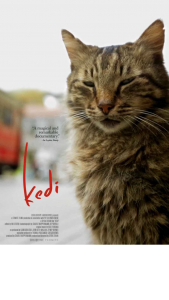
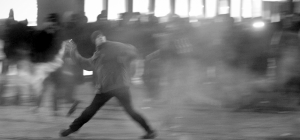 Before the film began, the directors explained the decision-making process. Throughout the story we were given checkpoints with two choices on how the story would unfold. We had to democratically and collectively decide which choice to make. The legitimacy of the democratic process can be argued since the directors still had the primary power over the process and made the executive decisions over the progression of choices. This point, however, supports the primary thesis of the film: the interactions between the audience and the directors, the roles each audience member inferentially plays, and the debates between audience members reflect the same social dynamics which take place during actual protests. One definitive choice the directors made to counter the reality of an apparent power hierarchy within protests was to give priority to femmes and people of color during discussions. The directors also explained if people feel they can easily speak up in crowds, they should give room to people who find it difficult to speak. Concurrently, people who find it difficult to speak in large crowds should challenge themselves and make choices for the audience. Once the rules were set, the directors prefaced the start of the film and said there is “no way back from the chaos.” Then the film began.
Before the film began, the directors explained the decision-making process. Throughout the story we were given checkpoints with two choices on how the story would unfold. We had to democratically and collectively decide which choice to make. The legitimacy of the democratic process can be argued since the directors still had the primary power over the process and made the executive decisions over the progression of choices. This point, however, supports the primary thesis of the film: the interactions between the audience and the directors, the roles each audience member inferentially plays, and the debates between audience members reflect the same social dynamics which take place during actual protests. One definitive choice the directors made to counter the reality of an apparent power hierarchy within protests was to give priority to femmes and people of color during discussions. The directors also explained if people feel they can easily speak up in crowds, they should give room to people who find it difficult to speak. Concurrently, people who find it difficult to speak in large crowds should challenge themselves and make choices for the audience. Once the rules were set, the directors prefaced the start of the film and said there is “no way back from the chaos.” Then the film began.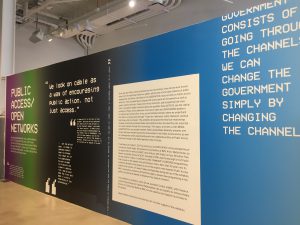 rm art. Many artists rose in this era and they are recognized and remembered today for their sense of bravery to pull through with such new and unique styles of expression through art. Just like the quote in the exhibition display, “we look on cable as a way of encouraging public action, not just access”. This change in technology and media opened doors to take action and make a move, not just know that there is access and not do anything. Another quote that hit me was, “[the artist] must seek the truth and make it visible regardless of the consequences”. These people were desperate to create content that will get the world stirring and hungry for freedom. Freedom to be whoever they want to be. Queer, gay, happy, sad, expressive, angry, etc.. These artists desired to be open and out there.
rm art. Many artists rose in this era and they are recognized and remembered today for their sense of bravery to pull through with such new and unique styles of expression through art. Just like the quote in the exhibition display, “we look on cable as a way of encouraging public action, not just access”. This change in technology and media opened doors to take action and make a move, not just know that there is access and not do anything. Another quote that hit me was, “[the artist] must seek the truth and make it visible regardless of the consequences”. These people were desperate to create content that will get the world stirring and hungry for freedom. Freedom to be whoever they want to be. Queer, gay, happy, sad, expressive, angry, etc.. These artists desired to be open and out there. 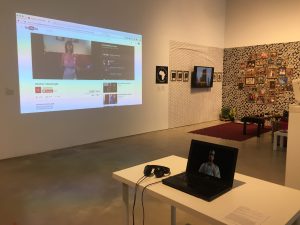
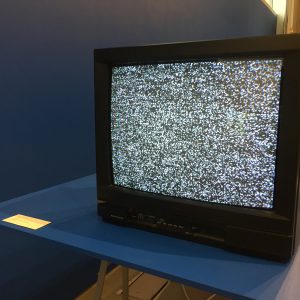 It really didn’t have much description except that it loops every two minutes, but I liked this display. It was literally a static screen, but I could watch it for a long time without being bored because even though it can be “just static”, it also seemed so expressive, chaotic, and noisy. Almost as if it was trying to tell me something.
It really didn’t have much description except that it loops every two minutes, but I liked this display. It was literally a static screen, but I could watch it for a long time without being bored because even though it can be “just static”, it also seemed so expressive, chaotic, and noisy. Almost as if it was trying to tell me something.